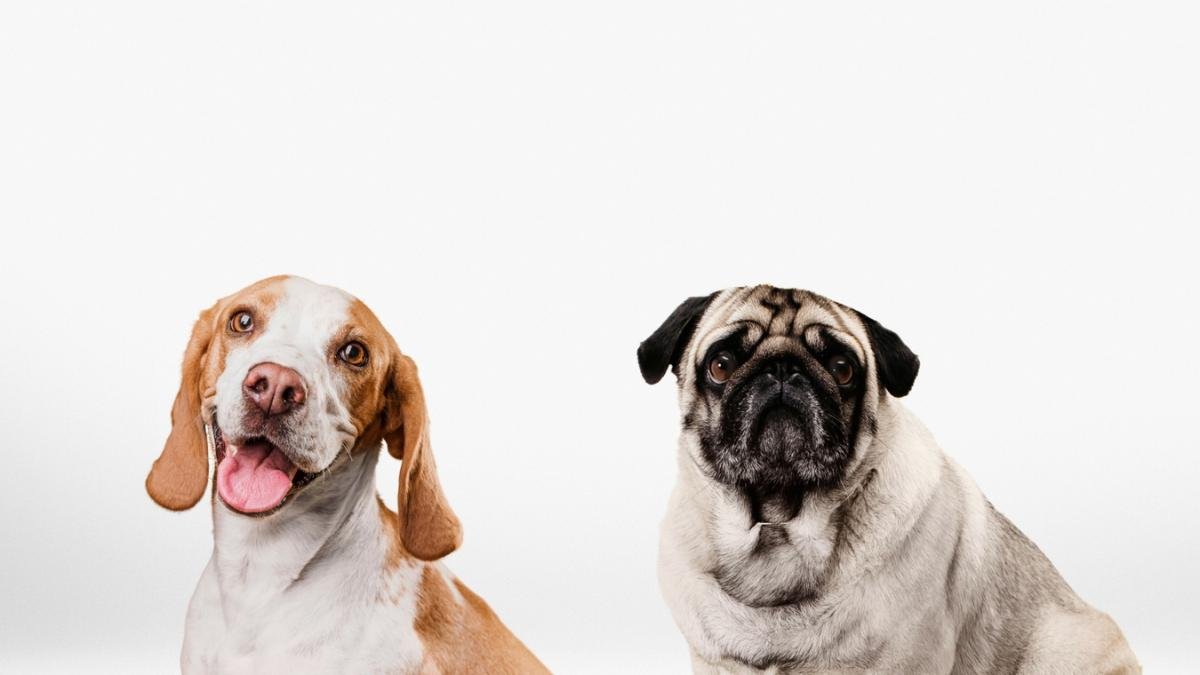Dog-to-Dog Introductions: Bringing a new dog into your home is an exciting adventure, but it can also be a challenging transition, especially if you already have a dog companion. The key to success is a carefully planned introduction that ensures a harmonious start to your dogs’ relationship. With patience and the right approach, you can help them progress from rivals to best friends.
Choose the Right Match
The first step in fostering a positive dog-to-dog introduction is selecting the right match. Take into consideration the following factors:
- Temperament: Consider your current dog’s temperament. Is your dog friendly and social or more reserved? Look for a new dog with a compatible temperament.
- Energy Level: Match the energy levels of your dogs. If one is high-energy and the other is more relaxed, it might lead to tension.
- Size and Breed: The size and breed of the new dog should also be compatible with your current dog.
Prepare Your Home
Before bringing the new dog home, prepare your living space:
- Dog-Proof: Ensure your home is safe and dog-proofed to prevent any accidents. Remove potential hazards and secure valuable or potentially aggressive-inducing items.
- Separate Spaces: Have separate food and water dishes, toys, and resting areas for each dog. This helps prevent territorial disputes.
The Initial Meeting
The initial meeting between your dogs is crucial. Here’s how to make it a positive experience:
- Neutral Location: Choose a neutral location, like a park, for the first meeting. This prevents territorial behavior and ensures both dogs feel more at ease.
- Keep on Leash: Keep both dogs on a leash and under control during the initial encounter. This provides a safety net in case tensions rise.
Observe Body Language
Watch for signs of aggression or stress in both dogs:
- Signs of Aggression: Growling, snarling, or tense body language are signs of aggression. If it escalates to severe aggression, consider seeking professional help.
Gradual Introduction
To ensure a smooth transition, follow these steps:
- Bring the New Dog Home: After the initial meeting, bring the new dog into your home. Keep them separated at first.
- Sniffing Through a Barrier: Allow the dogs to see and sniff each other through a baby gate or a partially open door. This allows them to get accustomed to each other’s scent.
- Controlled Interactions: Gradually introduce the dogs by allowing short, controlled interactions while always supervising. Use positive reinforcement with treats and praise to reward calm behavior.
- Increase Supervised Time: As the dogs become more comfortable with each other, increase the time they spend together under supervision. Continue rewarding positive interactions.
- Gradual Integration: Over time, you can allow them to share space without a barrier. Be patient and take it slow. Some dogs may adjust in a few days, while others might take weeks.
Establish a Routine
To foster a strong bond, establish a consistent daily routine for both dogs:
- Feeding: Create a feeding routine and ensure that both dogs have their own dishes.
- Playtime and Walks: Schedule playtime and walks to engage both dogs and help them bond.
Seek Professional Help if Needed
If the dogs continue to show aggression or hostility, consult a professional dog trainer or behaviorist for guidance. Their expertise can help resolve any issues and ensure a positive relationship between your dogs.
How Long Does It Take for Dogs to Adjust?
The time it takes for dogs to adjust to each other can vary. Some may adapt within days, while others may take weeks or even months. Patience is crucial. Monitor their interactions, and if any signs of aggression or tension persist, consult with a professional for guidance.
Conclusion
Introducing a new dog to your current dog can be a challenging process, but with careful planning and patience, you can help them go from rivals to best friends. Keep the best interests of both dogs in mind, and remember that each dog is unique. By following these guidelines, you can ensure a positive transition and create a happy, harmonious home for all your furry family members.
FAQs on New Dog Introduction
How do I deal with my jealous dog with a new dog?
• Prioritize your current dog’s needs and maintain their routine.
• Spend individual time with your current dog.
• Use positive reinforcement to create positive associations.
• Engage both dogs in parallel activities.
• Provide separate spaces and supervised interactions.
How long does it take for a dog to adjust to a new dog?
The time it takes for a dog to adjust to a new dog can vary widely. Some dogs may adapt within a few days, while others might take several weeks or even months. Patience is key, and it depends on the individual dogs, their personalities, and the care taken during the introduction process.
What is the 3-3-3 rule for dogs?
The “3-3-3 rule” is a guideline often recommended for helping newly adopted dogs adjust to their new homes. It provides a structured approach to ease the transition and reduce stress for the dog during the first three days, three weeks, and three months in their new environment:
New puppy introduced to older dog?
Yes, it’s generally okay to introduce a puppy to an older dog. In fact, this can be a positive experience for both dogs. However, the introduction should be done carefully to ensure a smooth transition and a harmonious relationship between the two.
How long does it take for an older dog to accept a new puppy?
The time it takes for an older dog to fully accept a new puppy can vary widely depending on the individual dogs and their personalities. It may take several weeks to several months or even longer for the older dog to fully adjust to the presence of a new puppy.
How to introduce a puppy to a 2 year old dog?
To introduce a puppy to a 2-year-old dog, start in a neutral space with both dogs on leashes. Observe their body language, control interactions, and reward positive behaviour. Keep them supervised, maintain a routine, and be patient. If issues persist, consult a professional dog trainer or behaviorist.
What to expect when introducing a new dog?
When introducing a new dog to your household, expect a range of reactions, including initial curiosity, varying responses from your existing pets, potential play or tension, and an adjustment period. Close supervision is key, as the dogs establish their roles and dynamics. Behavior changes and individual reactions are normal, but with patience and proper introduction, most dogs can adapt and form positive relationships over time.

